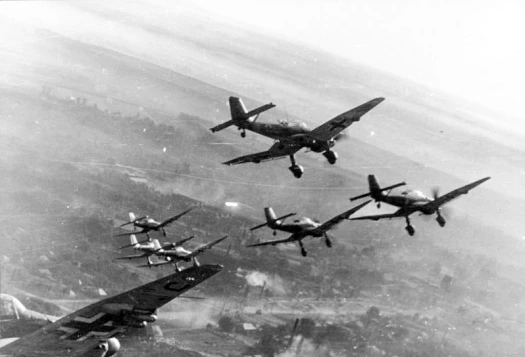
The Stuka was a German dive bomber and ground attack aircraft used through the whole campaign in WWII. The aircraft was designed by Hermann Pohlmann and made the first appeal in 1935. The inverted gull wings and fixed spatted undercarriage became iconic after the unstoppable invasion of Poland. Because of its success with the Blitzkrieg tactics, it was widely used as a propaganda symbol for German Luftwaffe.
The early B version of the Stuka was installed with two propeller-driven sirens. They were mounted on the wing’s leading edge, or on the front edge of the fixed main gear fairing. During the diving process, the air passes through the siren and creates a haunting sound.
People labelled this distinct sound as Jericho Trumpet, it is referenced from the Biblical story ‘Battle of Jericho’. According to Joshua 6:1-27, the walls of Jericho fell after Joshua’s Israelite army marched around the city. On the seventh day, they marched seven times around the walls, then the priests blew their ram’s horns, the Israelites raised a great shout, and the walls of the city fell. From the Book of Joshua, we can imagine the psychological impact caused by the Stuka.

The grating sound intimidated the soldiers on the ground who became disoriented, panicky and unable to return fire at the aircraft effectively. Those who survived from the dive bombing attack would remember it forever. The sound is so iconic, so movie producers often use it on the propeller plane.
I want to use this unique sound to represent the trauma of war. The screaming of the siren is so aggressive that vibrates our eardrums. It produces a similar effect to the Shepard Tone. My plan is to create an ultimate tension by the mixture of Shepard Tone and Stuka siren.
